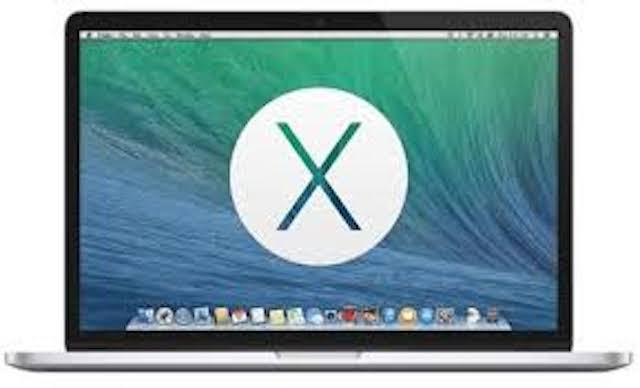Some of the new features are definitely the result of the ‘iOSification’ of the Mac operating system. In the latest few releases of OS X, there has been an effort to make some features of iOS, such as Notifications and Messages, also part of OS X.
iBooks – Mavericks takes this convergence a step closer with iBooks, which is now a Mac app which lets you keep all of your books across your Mac and other devices via iCloud.
Maps is also now available on the Mac although I think it makes much more sense for a mobile device than a laptop or desktop. Maps supports a flyover view which is an interactive 3D experience that lets you fly over select cities. Local searches are also supported. By clicking on a pin or a point of interest, you can get the complete address, phone number, website link, photos, and Yelp reviews. A nice feature is the ability to send directions to your iOS mobile device.
Calendar has been updated with some features. An ‘event inspector’ makes it easier to create and edit events. It suggests addresses and points of interest when you start typing in the location field. It also shows the location on a map and allows you to get direction with a single click. Also displayed is the weather forecast. A nice feature is that it will calculate how long it will take to get there. You can send yourself a notification so you will know when you need to leave.
Safari – Some of Safari’s new features are:
- Shared Links – Links posted by people you follow on Twitter and LinkedIn are displayed in the Sidebar.
- Sidebar – In addition to the Shared Links, you can see your bookmarks and Reading List next to the page that you are currently viewing.
- Top Sites – You can add sites from your bookmarks and rearrange the thumbnails.
Notifications – OS X Mavericks provides you with the ability to interact directly with your notifications. For example, you can reply to a message or reply to or delete an email within Notifications. Also, you can now sign up with websites to get notifications about breaking news, sports scores, etc.
Finders Tabs – One of my favorite new features is Finder Tabs. Gone is the need for multiple Finder windows. Finder Tabs works similar to Safari Tabs. Instead of multiple windows, each window appears as its own tab within the main window.
Tags – Another feature that I like in OS X Mavericks is Tags. Tags let you organize and find your files, including those in iCloud . Tag related files with same tag word, like ‘Vacation.’ In Finder, search for ‘Vacation’ and any file so tagged will appear in the search results.
iCloud Keychain stores your website usernames and passwords with 256-bit AES encryption across your Mac and your iOS devices that have been approved for use of the keychain. A nice feature but it does come with some degree of risk should your Mac or iOS device fall into the wrong hands. Not necessarily from the encrypted data but more from some nefarious person trying different websites to see if your information is automatically filled in. Just another reason to use a passcode (or fingerprint for you iPhone 5s people) to safeguard your information.
Multiple displays – With OS X Mavericks, there is no longer the concept of a primary or secondary display. Each display now has its own menu bar. Also, the Dock is available on whichever screen you’re working on.
System requirements for the OS X Mavericks upgrade include:
- OS X version 10.6.8 (Snow Leopard) or later
- 2GB of memory
- 8GB of available space
The upgrade is available for free in the Mac App Store.

